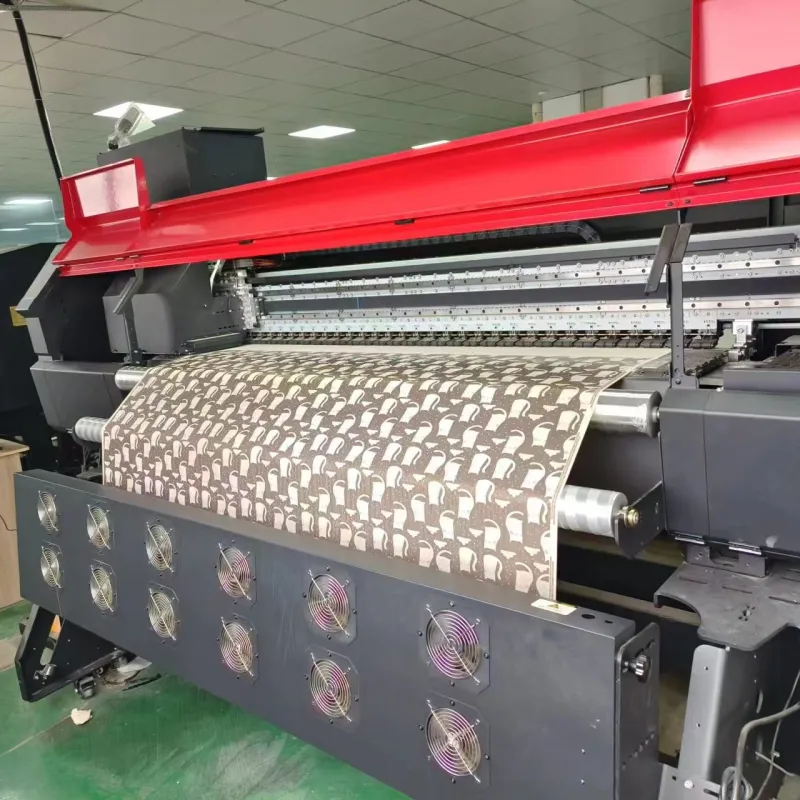Is Transfer Paper and Sublimation Paper the Same?
When it comes to printing designs onto various surfaces, transfer paper and sublimation paper are two common options that often cause confusion. While both serve similar purposes, they are not the same and have distinct characteristics that make them suitable for different applications. Understanding the differences between transfer paper and sublimation paper is crucial for achieving the desired results in your printing projects.

Composition and Functionality
Transfer paper, also known as iron-on paper, is typically made of a thin, heat-sensitive material coated with a layer of polymer. This paper is designed to transfer printed designs onto surfaces such as fabrics, ceramics, or metals using heat and pressure. The ink on the transfer paper is released when heated, adhering to the target surface.
On the other hand, sublimation paper is specifically engineered for use with sublimation printing, a process that involves transferring dye onto materials such as fabrics, ceramics, or plastics. Sublimation paper is coated with a special layer that enables the ink to sublimate—transforming from a solid to a gas without passing through a liquid phase—when exposed to heat. This allows the ink to penetrate the surface of the material, resulting in vibrant and durable prints.
Printing Process
The printing process for transfer paper involves printing the desired design onto the coated side of the paper using an inkjet or laser printer. Once printed, the design is transferred onto the target surface using a heat press or an iron. The heat activates the ink, causing it to adhere to the surface permanently.
Sublimation printing, on the other hand, requires special sublimation ink and a printer equipped with sublimation capabilities. The design is printed onto the sublimation paper using the appropriate printer and ink. Then, the paper is placed onto the target material and subjected to heat and pressure using a heat press. As the ink sublimates, it bonds with the surface of the material, creating a seamless and durable print.
Compatibility with Materials
Transfer paper is versatile and can be used on a wide range of materials, including cotton, polyester, and blends. However, it may not produce optimal results on certain fabrics or surfaces, such as dark-colored or textured materials.
Sublimation paper, on the other hand, is specifically designed for use with sublimation printing and works best on materials with a high polyester content. It produces vibrant and long-lasting prints on fabrics, ceramics, metals, and other polyester-coated items.
End Results
The final output quality differs between transfer paper and sublimation paper. Transfer paper prints tend to have a slightly raised texture and may fade or crack over time, especially when subjected to frequent washing or high heat. Sublimation paper prints, on the other hand, result in seamless, high-resolution images with vibrant colors that are embedded into the material, resulting in long-lasting durability and colorfastness.
Cost Comparison
In terms of cost, transfer paper is generally more affordable than sublimation paper. However, the cost per print may vary depending on factors such as the quality of the paper, ink, and equipment used. While transfer paper requires less specialized equipment and ink, sublimation printing may involve higher upfront costs for the printer, ink, and heat press.
Durability and Longevity
Durability is a key consideration when choosing between transfer paper and sublimation paper. Transfer paper prints are prone to fading, cracking, and peeling over time, especially when exposed to harsh conditions or frequent washing. In contrast, sublimation paper prints are highly durable and resistant to fading, peeling, and washing, making them ideal for long-term use.
Environmental Impact
When it comes to environmental impact, sublimation printing is generally considered more eco-friendly than transfer printing. Sublimation inks are water-based and produce minimal waste during the printing process, while transfer paper may generate excess paper waste and chemical emissions from heat transfer.
Applications
Transfer paper is suitable for a variety of applications, including custom apparel, promotional products, and personalized gifts. It is commonly used by hobbyists, small businesses, and DIY enthusiasts due to its ease of use and affordability.
Sublimation paper is preferred for applications that require vibrant colors, durability, and long-lasting prints, such as sportswear, home décor, and personalized gifts. It is popular among professional printers, photographers, and businesses that demand high-quality results.
Pros and Cons
Transfer paper offers a cost-effective solution for short-run projects and is easy to use with minimal equipment. However, it may not produce the same level of quality and durability as sublimation printing.
Sublimation paper, while more expensive and requiring specialized equipment, delivers superior print quality, durability, and colorfastness. It is ideal for high-volume printing and applications that demand professional-grade results.
Market Trends
The transfer paper market continues to grow, driven by demand from small businesses, hobbyists, and DIY enthusiasts. However, there is a growing trend towards sublimation printing due to its superior quality and durability, especially in the apparel and promotional product industries.
Tips for Choosing
When choosing between transfer paper and sublimation paper, consider factors such as the desired print quality, durability, cost, and environmental impact. Consult with printing experts or conduct tests to determine which paper is best suited for your specific project requirements.
Conclusion
In conclusion, transfer paper and sublimation paper serve similar purposes but have distinct characteristics that make them suitable for different printing applications. While transfer paper offers a cost-effective solution for simple designs and short runs, sublimation paper delivers superior print quality, durability, and colorfastness, making it ideal for professional-grade projects. Consider your project requirements, budget, and environmental considerations when choosing between transfer paper and sublimation paper.
- Previous: MagnaColours® | Water-Based Screen Printing Inks
- Next: None


